Russian prison tattoos are a unique form of body art with a long and storied history. These tattoos were originally used to convey information about an individual’s criminal past, including their rank, status, and affiliations. However, over time, these tattoos have taken on a life of their own, developing intricate designs and meanings that speak to the experiences and struggles of those who wear them.
In this article with Impeccable Nest, we’ll take a deep dive into the world of Russian prison tattoo meanings, exploring their origins, symbolism, and cultural significance.
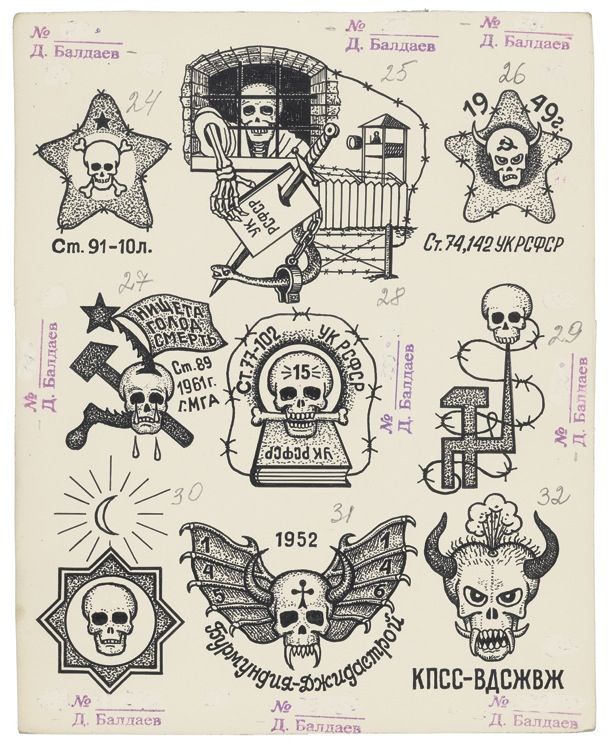
The History of Russian Prison Tattoos
Russian prison tattoos have been around since the early 20th century, when they were first used as a way for inmates to communicate with one another and assert their dominance within the prison system. These tattoos were often applied with makeshift needles and ink made from cigarette ash or other materials available to prisoners.
Over time, these tattoos evolved into a complex system of symbols and designs, each with its own meaning and significance. They became a way for prisoners to display their rank, status, and affiliations within the criminal underworld, as well as their loyalty to various criminal organizations.
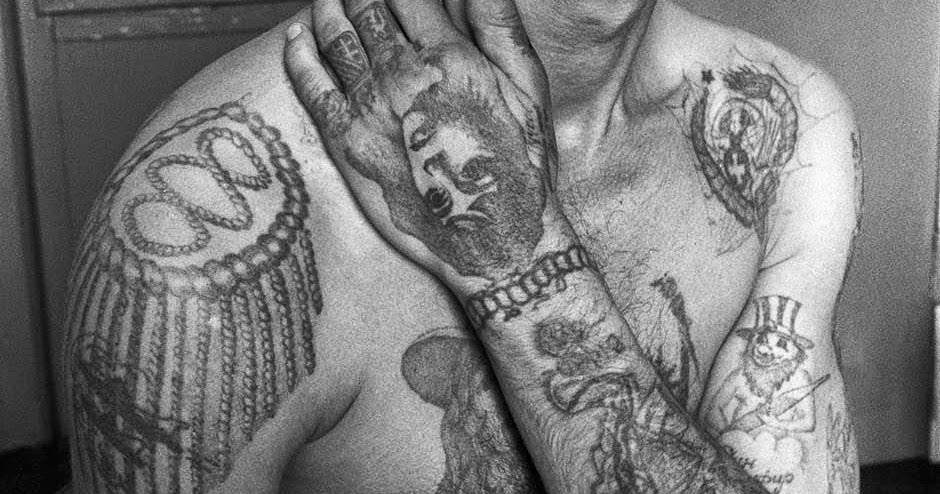
Russian Prison Tattoo Meanings: Unlocking the Symbolism Behind
Russian prison tattoos have a complex system of meanings that originated within the Russian criminal underworld. These tattoos often serve as a form of visual communication, conveying information about a person’s criminal history, status, and affiliations. It’s important to note that these meanings are specific to the context of Russian prisons and criminal subculture, and they may not apply to other cultures or settings. Here are some common Russian prison tattoo meanings:
The Eight-Point Star
Russian prison tattoos have a long and complex history, with each design carrying a specific meaning or message that is recognized within the criminal subculture. One of the most common designs is the eight-point star, which has various interpretations depending on its depiction.
In general, the eight-point star symbolizes a high-ranking thief or “vor v zakone,” a term used to describe a person who has reached a certain level of respect and authority within the Russian criminal underworld. These individuals are typically viewed as more than just common criminals; they are seen as legends and even heroes by some. The eight-point star serves as a badge of honor for these individuals, representing their status and accomplishments within the criminal hierarchy.
However, the meaning of the eight-point star can vary based on how it is depicted. For example, if the star has a dot in the center, it may indicate that the wearer has served time in prison. If the star is heavily shaded or has “rays” that are bold and angular, it may represent a willingness to use violence or a warning to potential enemies. In some cases, the eight-point star may also be accompanied by other symbols or designs, such as spider webs, skulls, or the letters “ACAB” (which stand for “All Cops Are Bastards”).
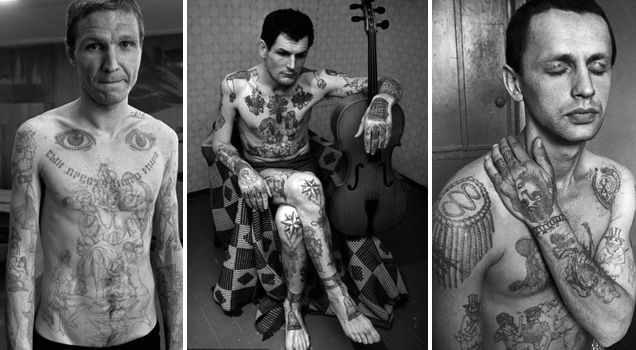
It’s important to note that while these tattoos were once exclusive to the prison population, they have since become popularized in mainstream culture. As a result, not all individuals who wear an eight-point star tattoo necessarily have ties to the criminal underworld. However, for those who do, the symbol holds significant meaning and serves as a reminder of their past or current involvement in criminal activity.
Overall, the eight-point star is a powerful symbol within Russian prison tattoo culture, representing a high-ranking thief’s status and accomplishments within the criminal hierarchy. Its interpretation can vary based on its depiction and accompanying symbols, but its underlying meaning remains constant: a badge of honor for those who have achieved respect and authority within the criminal underworld.
The Spider Web
Russian prison tattoo culture has long been a subject of fascination and intrigue, with its intricate designs and hidden meanings. Among the most recognizable of these tattoos is the spider web design, which carries significant symbolism for those who bear it.
In Russian prisons, the spider web tattoo is often associated with a lengthy prison sentence or a lifetime spent behind bars. It is seen as a sort of badge of honor among prisoners who have endured years or even decades of incarceration. The intricate design of the web is meant to symbolize the complexity and entanglement of a prisoner’s life within the confines of the prison system.
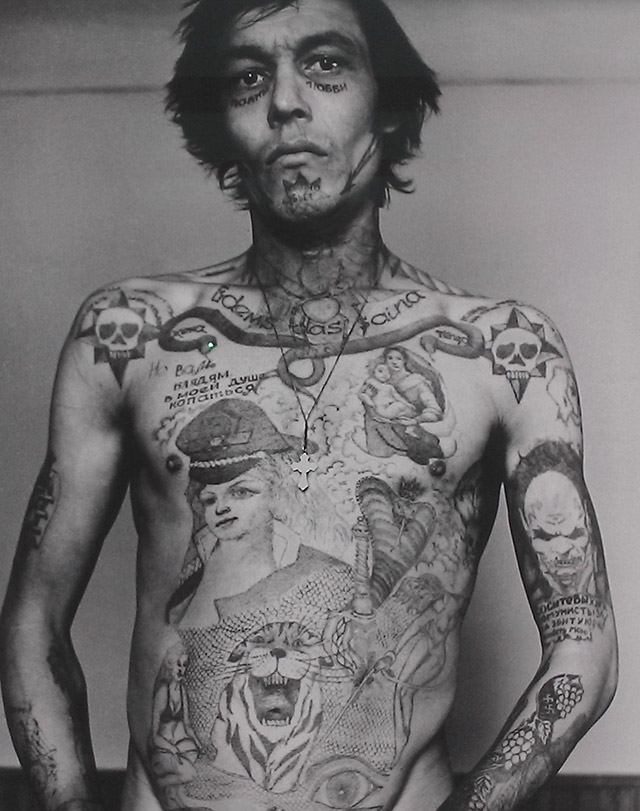
The number of strands in the web can also carry additional meaning. In some cases, the number of strands may indicate the length of a prisoner’s sentence, with more strands representing a longer stay in prison. For others, the number of strands may represent the number of years that a prisoner has already served.
Beyond the specific meanings associated with the spider web tattoo, it is worth noting that all tattoos in Russian prisons serve as a form of communication and identification. In a system where prisoners are often stripped of their individuality, tattoos provide a way for individuals to express themselves and to establish their place within the hierarchy of the prison population.
Some other common Russian prison tattoos include stars, crosses, and skulls, each with their own distinct meanings and associations. While these tattoos may be viewed as intimidating or even frightening by those outside of the prison system, they hold deep significance for those who wear them, representing years of struggle and survival within an unforgiving environment.
Overall, the spider web tattoo is just one example of the rich and complex tattoo culture that exists within Russian prisons. For prisoners, these tattoos serve as a way to express themselves and to mark their experience within the system. And for outsiders looking in, they offer a window into a fascinating and often misunderstood world.
The Skull
Russian prison tattoo culture has a rich and complex history, with many symbols that hold deep meanings for those who wear them. Among these symbols is the skull tattoo, which has a unique significance within the Russian prison system.
In most cultures, the skull is a symbol of death and mortality. However, in Russian prisons, the skull tattoo often signifies something more specific: a willingness to face death without fear. This message is conveyed through the placement of the tattoo on the hand or wrist, where it is prominently displayed for all to see.
For prisoners, the skull tattoo can serve as a warning to others that they are not to be messed with. The wearer is seen as someone who is willing to fight to the death if necessary, and who will not back down from a confrontation. This reputation can be a valuable asset in a prison environment where displays of strength and toughness are highly valued.
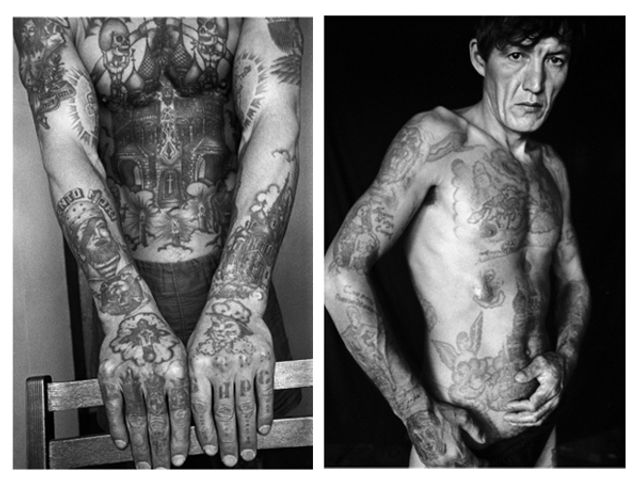
However, the significance of the skull tattoo goes beyond just a message of physical prowess. It also reflects a deeper philosophy of life and death. In Russian prison culture, death is viewed as an inevitable part of life, and one that should be accepted without fear or regret. By embracing the skull symbol, prisoners are affirming their acceptance of this worldview, and signaling their readiness to face whatever challenges come their way.
Of course, not all inmates who sport a skull tattoo are necessarily violent or dangerous individuals. Some may have gotten the tattoo for other reasons, such as to honor a fallen friend or family member. However, the symbolism behind the tattoo remains the same, and those who wear it are seen as embodying the values of strength, courage, and acceptance in the face of adversity.
The Playing Card
Russian prison tattoos have a rich history and a plethora of meanings associated with them. These tattoos are often done using crude, homemade instruments and ink that can be made from materials such as burned shoe soles, melted plastic or other objects that can be found in the prison environment.
One common tattoo design that is frequently seen in Russian prisons is the playing card tattoo. Each card has its own specific meaning, and these meanings can vary depending on the individual prison and region within Russia. However, there are some general meanings that are commonly associated with certain cards.

The ace of spades is often associated with a criminal mastermind or leader of a gang. This card is considered to be the highest-ranking card in the deck, and it is often worn by those who hold a position of power within the prison hierarchy.
The queen of hearts is typically associated with prostitution or sex work. This card is often worn by women who engage in this type of work within the prison, and it may also be worn by men who act as pimps or facilitators of prostitution.
Other cards may also have specific meanings associated with them. For example, the king of diamonds may indicate a thief or burglar, while the jack of clubs may indicate a drug addict or user.
It is important to note that not all prisoners who have these tattoos necessarily embody the meanings associated with them. Some individuals may get tattooed simply because they like the design or because they want to fit in with a particular group.
In addition to playing card tattoos, there are many other types of tattoos that are common in Russian prisons. These tattoos often have deep-rooted cultural or religious meanings and can include images of skulls, crosses, eagles, and stars, among others.
Barbed Wire
Russian Prison Tattoo Meanings: Barbe
Russian prison tattoos have a rich history and culture that can be traced back to the Soviet era. These tattoos were used as a form of communication and identification among prisoners, conveying information about an individual’s criminal status, rank, and affiliations within prison society.
One of the most common Russian prison tattoo designs is barbed wire, which is typically inked on the forehead, neck, or wrist. This tattoo design can have several meanings, depending on its placement and style.
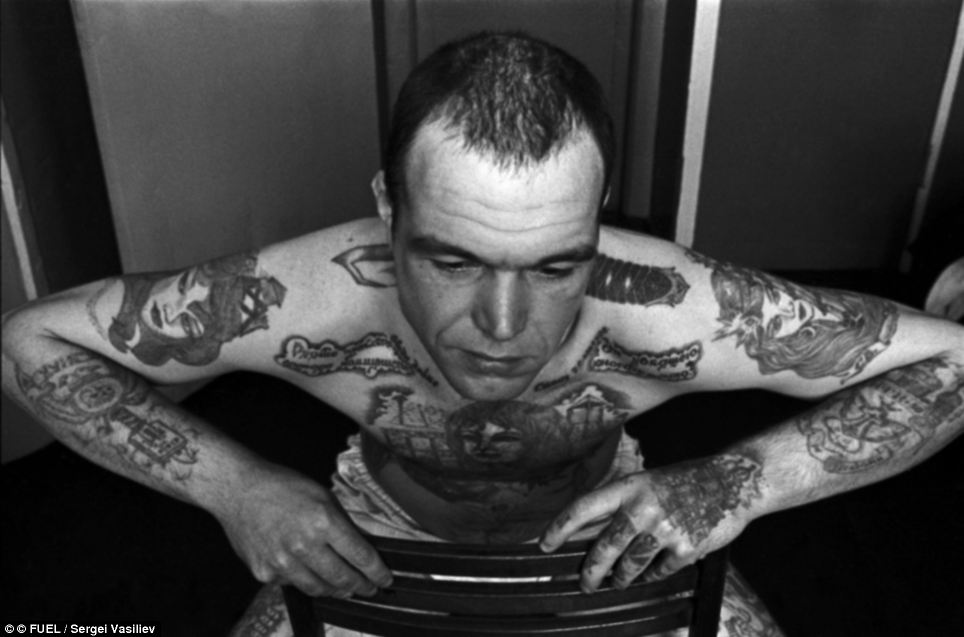
In general, a barbed wire tattoo symbolizes a long sentence or time spent in prison. The image of barbed wire represents confinement, restraint, and isolation, which are all hallmarks of life behind bars. In this sense, the tattoo is a way for the wearer to assert their toughness and resilience in the face of adversity, as well as their belonging to the larger community of inmates who share similar experiences.
However, the meaning of a barbed wire tattoo can also be more specific depending on its placement. For example, if the tattoo is located on the forehead, it may indicate that the wearer is a repeat offender or has committed a serious crime. This placement is particularly significant because it is visible to others, including prison officials and other inmates, and thus can be seen as a warning or sign of danger.
Teardrop
Russian prison tattoos have a rich history, and they are often used to convey a message about the wearer’s past experiences, beliefs, or status. One of the most recognizable tattoos commonly seen in Russian prisons is the teardrop tattoo under the eye.
The teardrop tattoo can have different meanings, depending on the context and the culture. In some cases, it may indicate that the wearer has committed a murder while in prison. Each teardrop could represent a victim, and the tattoo serves as a warning to others not to cross the wearer or risk facing the same fate. This type of tattoo is regarded as a badge of honor among some prisoners who see violence as a way of asserting their dominance in the prison hierarchy.
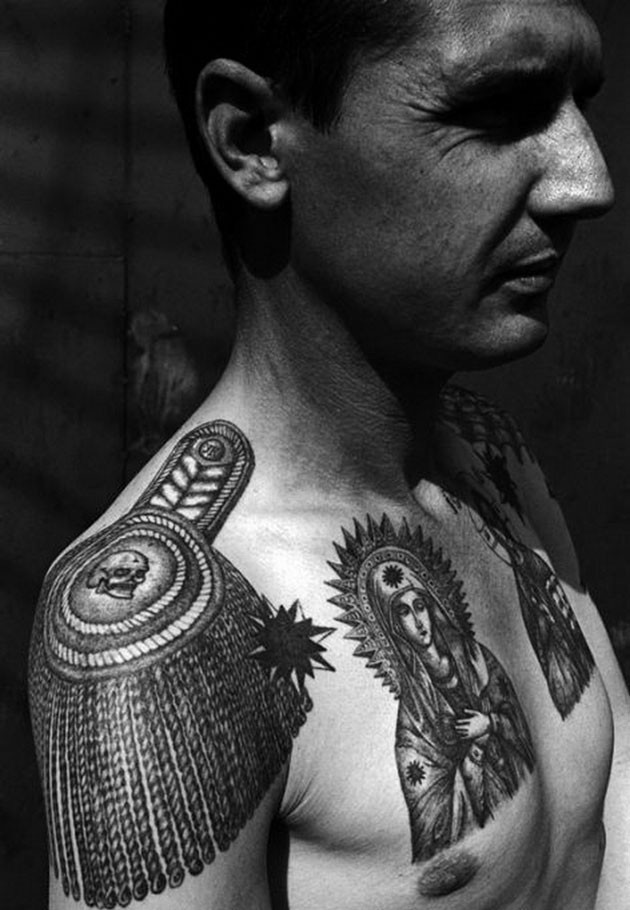
Alternatively, the teardrop tattoo may symbolize the loss of a loved one, particularly if the individual passed away violently or through tragic circumstances. The tattoo could be seen as a way of memorializing that person, and wearing it would signify that the wearer is still mourning their death. In this case, the tattoo is a deeply personal and emotional expression of grief, rather than a mark of violence.
Finally, the teardrop tattoo can also have religious connotations, particularly for those who follow Orthodox Christianity. In some circles, the tear drop symbolizes the Virgin Mary’s tears at the crucifixion of Jesus Christ. Wearing the teardrop tattoo could be seen as a way of expressing one’s faith and devotion to God, as well as a reminder of the suffering endured by Jesus.
In conclusion, the teardrop tattoo under the eye is a powerful symbol that can convey a range of meanings depending on the context and the culture in which it is displayed. While it is often associated with violence and crime, it is important to remember that the tattoo can also serve as a deeply personal expression of grief or faith. Understanding the cultural significance of these tattoos is essential for anyone seeking to decode their meaning and appreciate the rich history and symbolism of Russian prison tattoos.
Cross on Chest
Russian prison tattoos have a long and complex history, with different designs carrying various meanings and messages. These tattoos often serve as a visual language among inmates, conveying information about one’s past crimes, affiliations, and beliefs.
One common tattoo design in Russian prisons is the cross tattoo on the chest. This tattoo can indicate a belief in prison values and traditions, which may include loyalty to fellow inmates, respect for authority figures within the prison hierarchy, and a willingness to use violence to protect oneself or one’s group.
However, the cross tattoo can also symbolize that the bearer is “clean” or has repented for their criminal behavior. In Russian prisons, being “clean” means renouncing one’s past criminal activities and embracing a new way of life. This might involve joining a prison gang or religious group, participating in educational or vocational programs, or simply committing to a more peaceful existence behind bars.
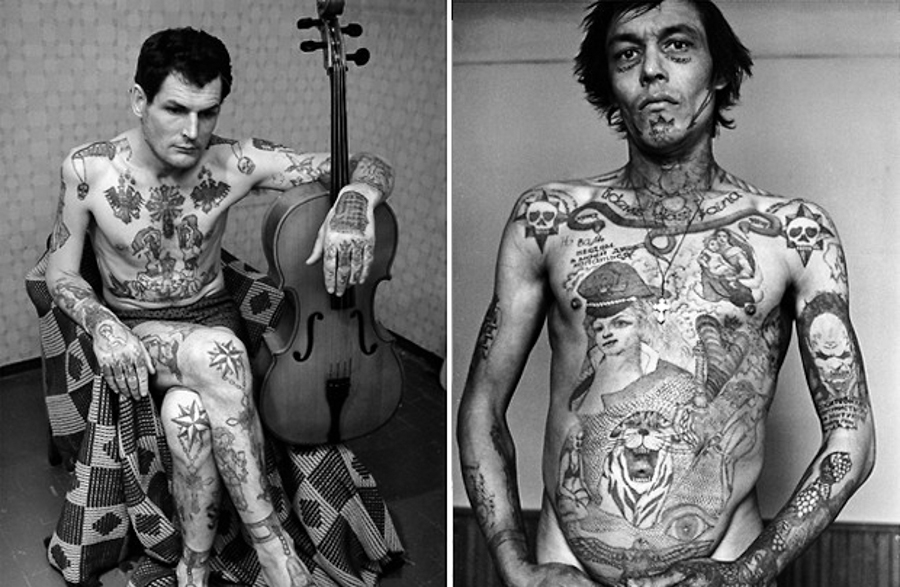
For those who choose to get a cross tattoo as a symbol of repentance, the design may be accompanied by other elements that convey their commitment to change. For example, a person might add the letters “KAT” (short for “kill all traitors”) to show their allegiance to a specific prison gang, or they might incorporate images of doves or other symbols of peace to demonstrate their newfound dedication to nonviolence.
It’s worth noting that while some Russian prison tattoos have become popular outside of prison walls, it’s generally considered disrespectful to wear these designs if you haven’t earned them through time served behind bars. Additionally, many of these tattoos are associated with violent or criminal activities, so wearing them can carry negative connotations or even put you at risk of harassment or retaliation from people who misunderstand their meaning.
These meanings are just a glimpse into the intricate and layered symbolism of Russian prison tattoos. It’s important to understand that these tattoos are deeply tied to a specific subculture and should not be interpreted outside of that context. Additionally, as societal norms change and prison systems evolve, the meanings and prevalence of these tattoos may also shift.
Conclusion
Russian prison tattoos may seem like just another form of body art, but they have a deep cultural and historical significance. Each tattoo tells a story about an individual’s past and present, and it is important to understand the meanings behind these tattoos before getting inked. While some tattoos may represent a desire for redemption and change, others can be associated with violent crime and danger. As with any tattoo, it is important to consider the potential consequences before making a decision.

I am Harvey Berry, a tattoo enthusiast who has immersed himself in the diverse world of ink, passionately exploring the beauty and artistry within each tattoo. My mission extends beyond uncovering the aesthetics of tattooing; it involves sharing in-depth knowledge across all aspects of this art form.
Fueled by genuine curiosity and love for every facet of tattooing, I have diligently crafted well-researched articles, with a special focus on the Tattoo Meaning of Impeccable Nest section. Here, my aim is to help the tattoo community gain a deeper understanding of the meanings and values embedded in each tattoo.
One of my primary goals is to encourage responsible decision-making when it comes to getting inked. I recognize that choosing to get a tattoo is a significant personal decision that requires careful consideration. Hence, I provide diverse resources covering the meaning of tattoos, the tattooing process, aftercare tips, and other valuable information.
Whether you are a seasoned tattoo enthusiast or embarking on your first exploration of the world of body art, I aspire to be a reliable resource for you at every step of your journey. I hope that my extensive knowledge of tattoos, especially in the Tattoo Meaning section, will assist you in finding inspiration to express yourself through the art of tattoos.
